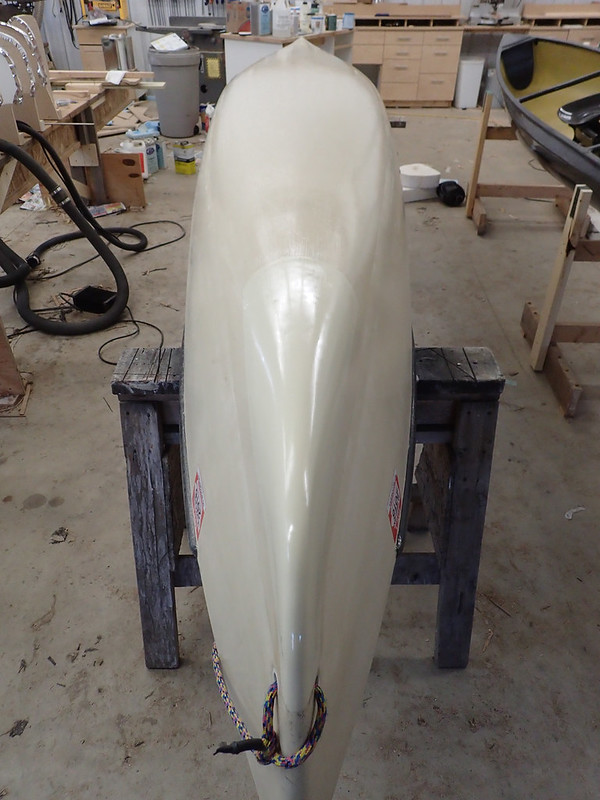My full fledged trip report is going to be a while in the making but I figured I could give one on the boat.
It was designed and built specifically for this trip to run class II rapids, handle lots of lake travel, travel upstream against potentially strong current, and carry at least a month worth of supplies and a dog. I'm happy to say it surpassed my expectations and that I couldn't be happier with it. If I had to do this same trip again next year I don't believe there's anything I would change with this boat.
It could have been more maneuverable in the rapids when loaded but that would have come at the expense of open water performance. It could track a little harder on the lakes and be more wind resistant but those would come at the cost of moving water performance. It seemed to strike just the right balance, at least for my style of paddling.
The extreme flare in the bow allowed me to tackle water bigger than I expected. It took some pretty big haystacks to put more than a splash over the bow. We paddled in some very strong winds from every direction on open water and I was impressed by how the boat handled them.
The sliding seat and adjustable foot brace allowed me to change trim accordingly and kept us moving along. The narrow pedestal made switching back and forth from sitting to kneeling quick and easy on the fly. I was a little worried about seat comfort after having to switch to the smaller seat but I had no issues and after a few days I ditched the foam seat pad because I found it more comfortable without it.
I thought speed was impressive for a boat capable of carrying such a load. Before leaving I tested the sprint speed and got it up to 6.2mph. Just .1mph less than I could do with my Bell Magic and Barracuda. On the trip, fully loaded, I was able to achieve 5.8mph in a sprint and on more than one occasion I needed every single bit of that speed. Actually there were times I could have used just a hair more. Never again will I say sprint speed is meaningless for tripping since you can only sustain it for short periods of time. It made a big difference on this trip.
A leisurely cruising speed was about 3.7mph. Kicking it up a notch, but still maintainable all day, though a good workout, brought it up to 4.3mph. Anything much over that was temporary. This is pretty much identical to what I get with a 10 day tripping load+dog in my Bell Magic.
Best part of the trip was when heading downstream and I passed future Alan paddling upstream. He gave me a big thumbs up and hollered across the river "no rudder needed." There are times it would have been nice to have but we got by fine without it and I think it would have been more hassle than it was worth dealing with it on the many portages.
Some glamour shots:
 20150817_001
20150817_001 by
Alan, on Flickr
 20150819_002
20150819_002 by
Alan, on Flickr
 P8220124
P8220124 by
Alan, on Flickr
The halfway point - Lake Winnipeg:
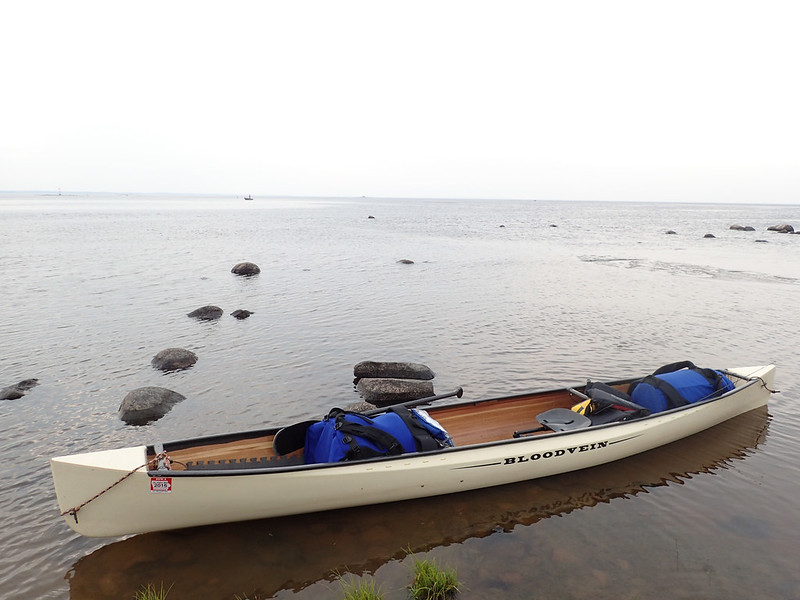 20150830_005
20150830_005 by
Alan, on Flickr
But it wasn't all sunshine and roses (actually, you'll notice very little sunshine in those pictures). One rainy evening I walked by the upside down boat in camp and reached down to wipe a leaf off the bow stem. It turned out not to be a leaf at all be exposed wood!
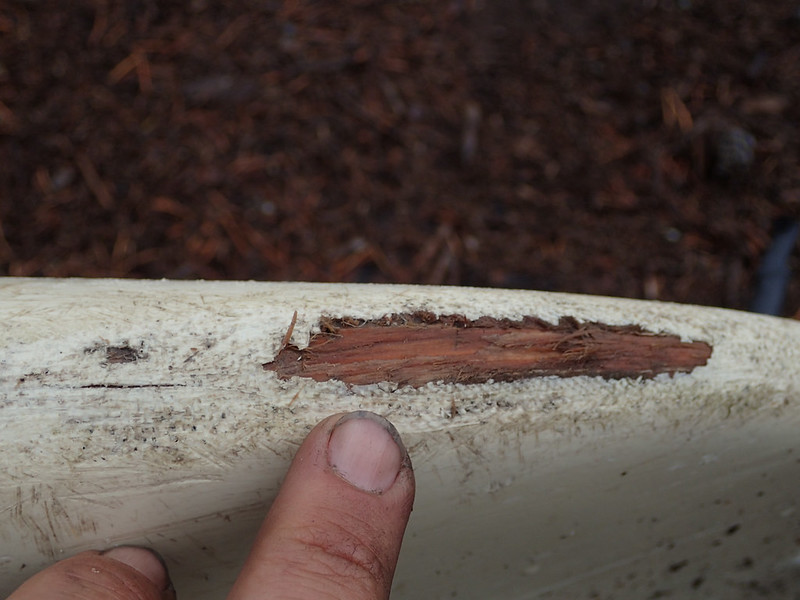 20150905_001
20150905_001 by
Alan, on Flickr
There was a little showing in the stern as well:
 20150905_002
20150905_002 by
Alan, on Flickr
Decided I couldn't continue in that condition so tomorrow would be a rest and canoe repair day. I hoped the weather would change so I could set the canoe in the sun and dry the wood out before trying to repair. But I awoke to overcast and intermittent drizzle. Nothing was going to dry out on its own that day so I had to resort to more drastic measures.....a canoe roast!
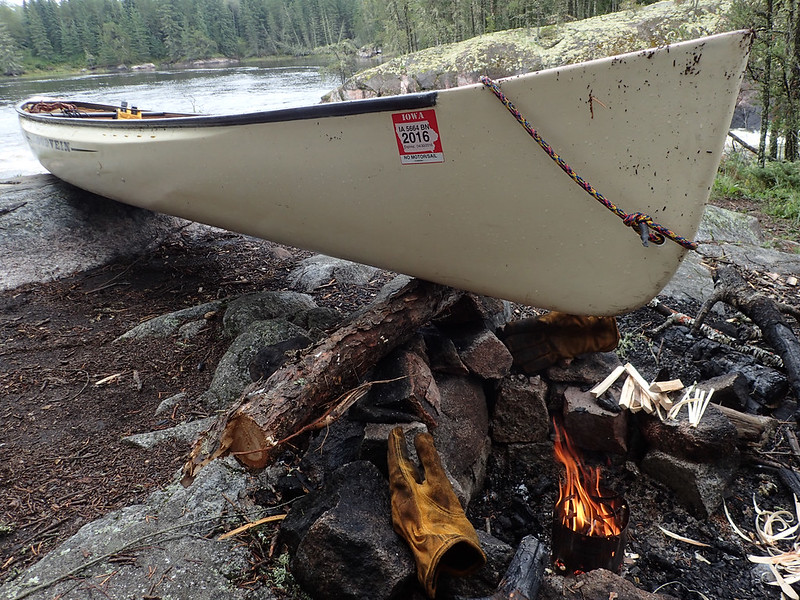 20150905_003
20150905_003 by
Alan, on Flickr
I slow roasted the canoe, alternating stems, about 3-4 hours and then, since the rain had quit, I let it sit another couple hours before repairing in the afternoon. Some people take along chairs or booze as luxury items. I carry nitrile gloves, syringes of epoxy, sand paper, fiberglass, carbon, and peel ply:
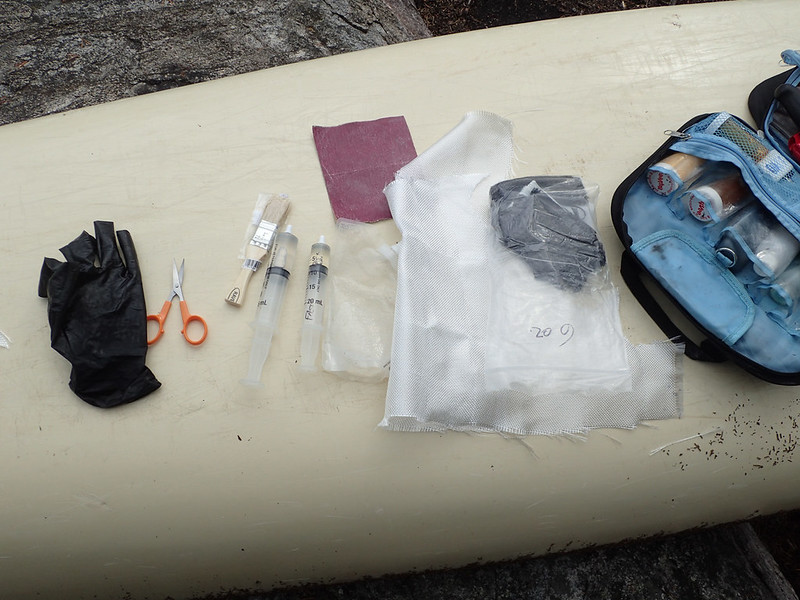 20150905_010
20150905_010 by
Alan, on Flickr
After a quick sanding:
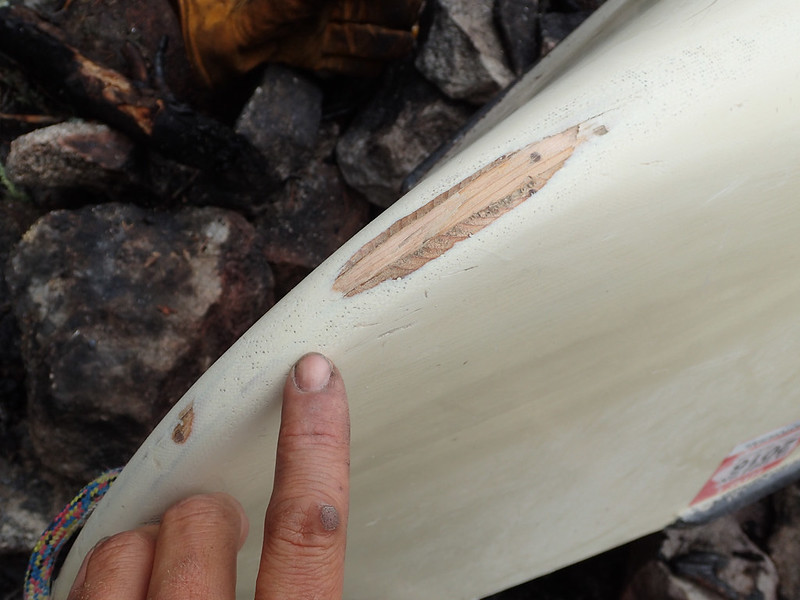 20150905_008
20150905_008 by
Alan, on Flickr
 20150905_009
20150905_009 by
Alan, on Flickr
I was using an alcohol stove on my trip so I could use some denatured alcohol to wipe things down before applying some bias cut S-glass and peel ply:
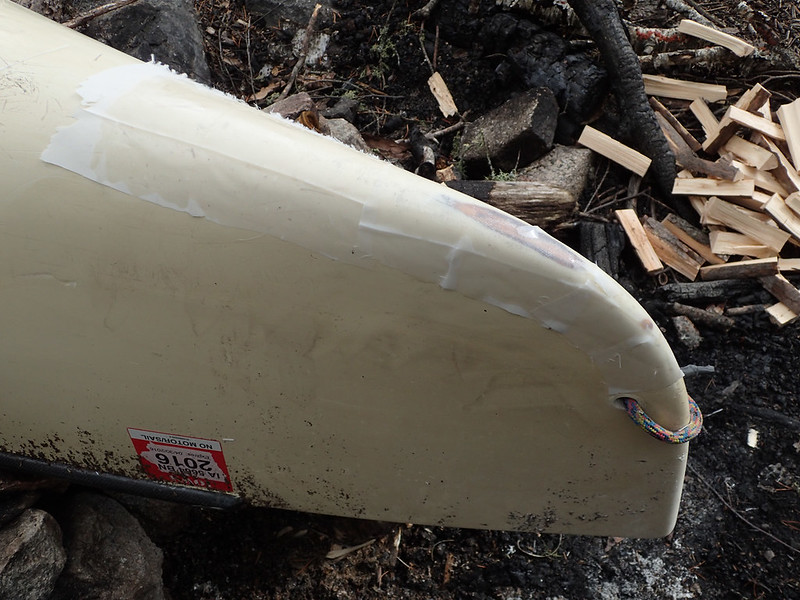 20150905_011
20150905_011 by
Alan, on Flickr
I used multiple smaller pieces of peel ply and cut some pleats in it but it was hard to get it to smoothly follow the contour. I didn't have enough to cut it on the bias. After a few minutes I wiped up the runs with more alcohol and after allowing it to setup for a couple hours to begin setting up it was back over the fire to kick the fast setting epoxy into high gear since it was now late afternoon and I planned to hit the water in the morning. Ambient temps were probably in the 50's that day so I couldn't rely on it to fully cure by itself.
Next morning the peel ply came off and things looked ok for a field repair. I can touch it up, and add some extra reinforcement, this winter:
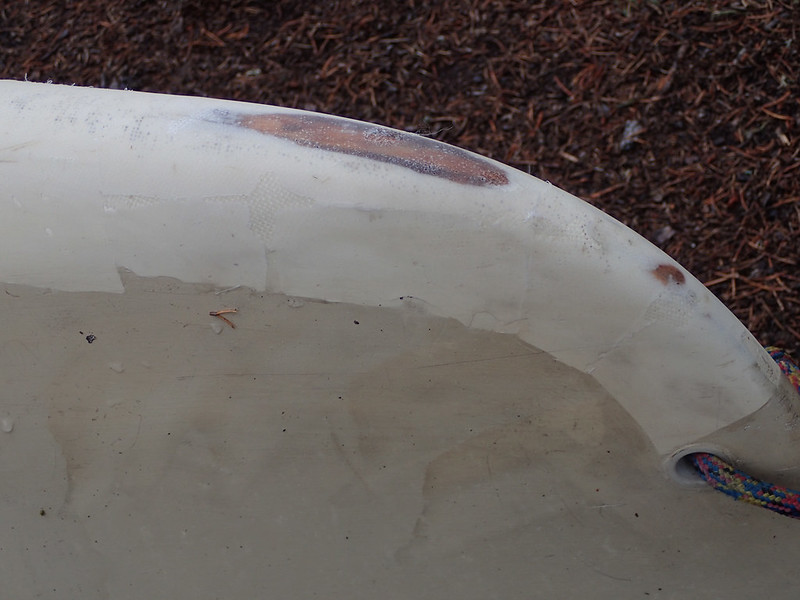 20150906_001
20150906_001 by
Alan, on Flickr
I believe upstream travel had caused most of the damage. Staying tucked in close to shore trying to catch small eddies and dodge the strongest current when paddling up swifts and small rapids made for lots of banging into submerged rocks or being shoved into exposed rocks by shifting currents. I was also not babying the boat and while I tried to treat it with respect there were times it was dragged and pulled over the rocks.
At the end of the trip I asked my canoe, "What was your favorite day of the trip?". She replied with, "This one:"
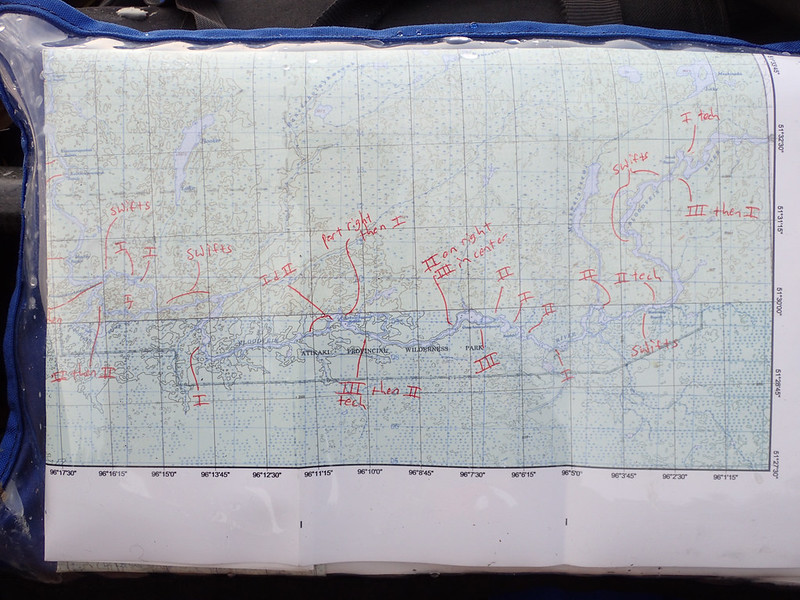 20150828_004
20150828_004 by
Alan, on Flickr
Very proud of my girl.
Alan














